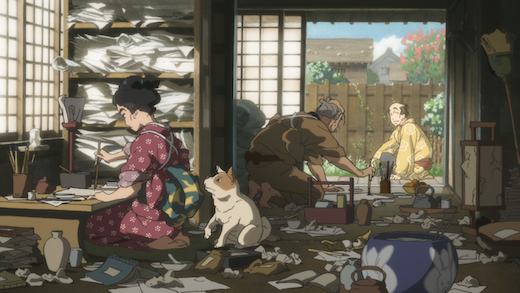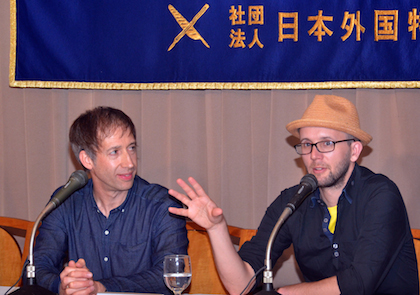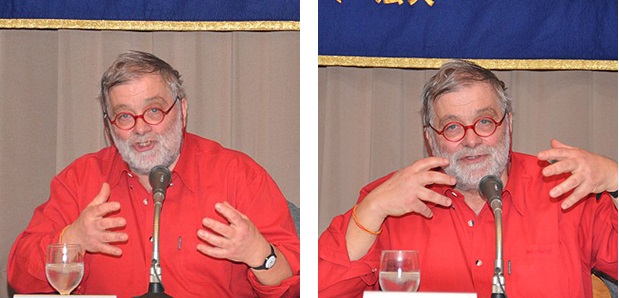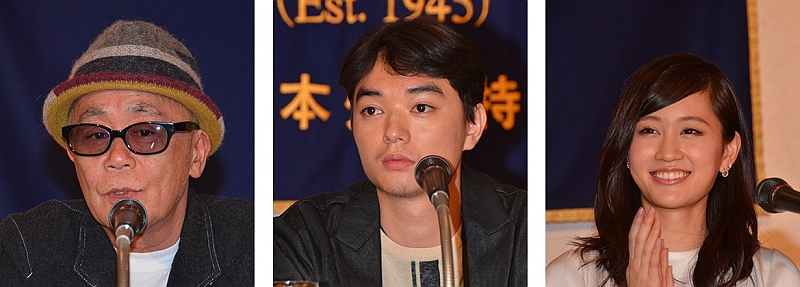OKINAWA: THE AFTERBURN
At 6:00 pm, an hour earlier than the usual start of FCCJ screening events, writer-director John Junkerman reassured a surprisingly large audience, “I’ve been told that the film doesn’t feel as long as it actually is.” At 9:30 pm, as the hour-long Q&A session was winding down and hands were still going up, the true extent of his accomplishment became clear. Not only was there consensus that the film’s 148-minute length was warranted by the complexity of its subject, but with the exception of one vocal dissenter, praise was effusive for Junkerman’s even-handed illumination of the troubling history of occupation, human and civil rights violations, and dogged resistance in Okinawa — an ongoing flashpoint in US-Japan relations that is drawing even greater attention in this, the 70th anniversary year since the end of World War II.
The club’s screening of Okinawa: The Afterburn was held just days after Okinawa Gov. Takeshi Onaga’s return from a trip to Washington, DC, where the US departments of State and Defense confirmed their “unwavering commitment” to go forward with construction of the huge new Marine base in Henoko, despite convulsive and constant protests from Okinawans for over a decade, and just weeks ago, a crowd of some 35,000 protestors surrounding the Diet in Tokyo.






